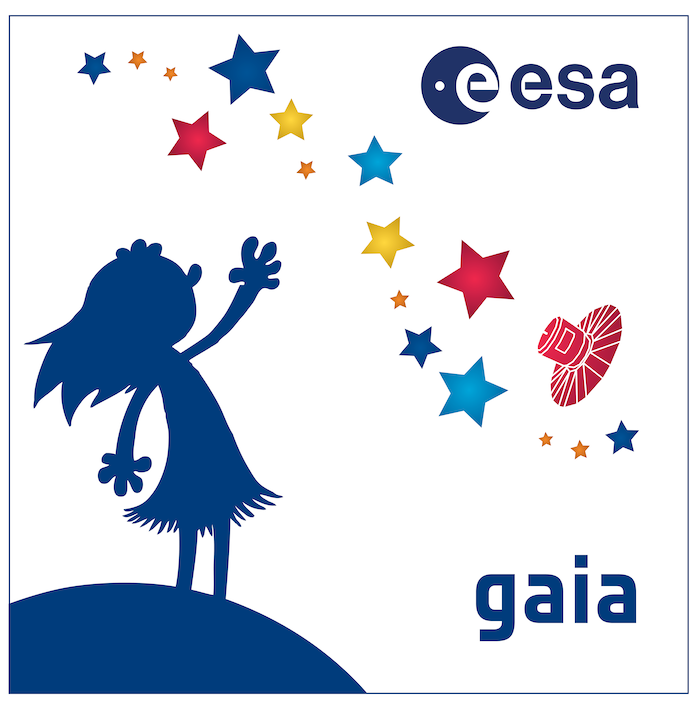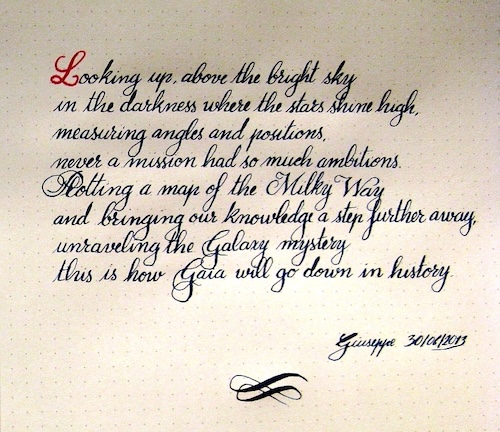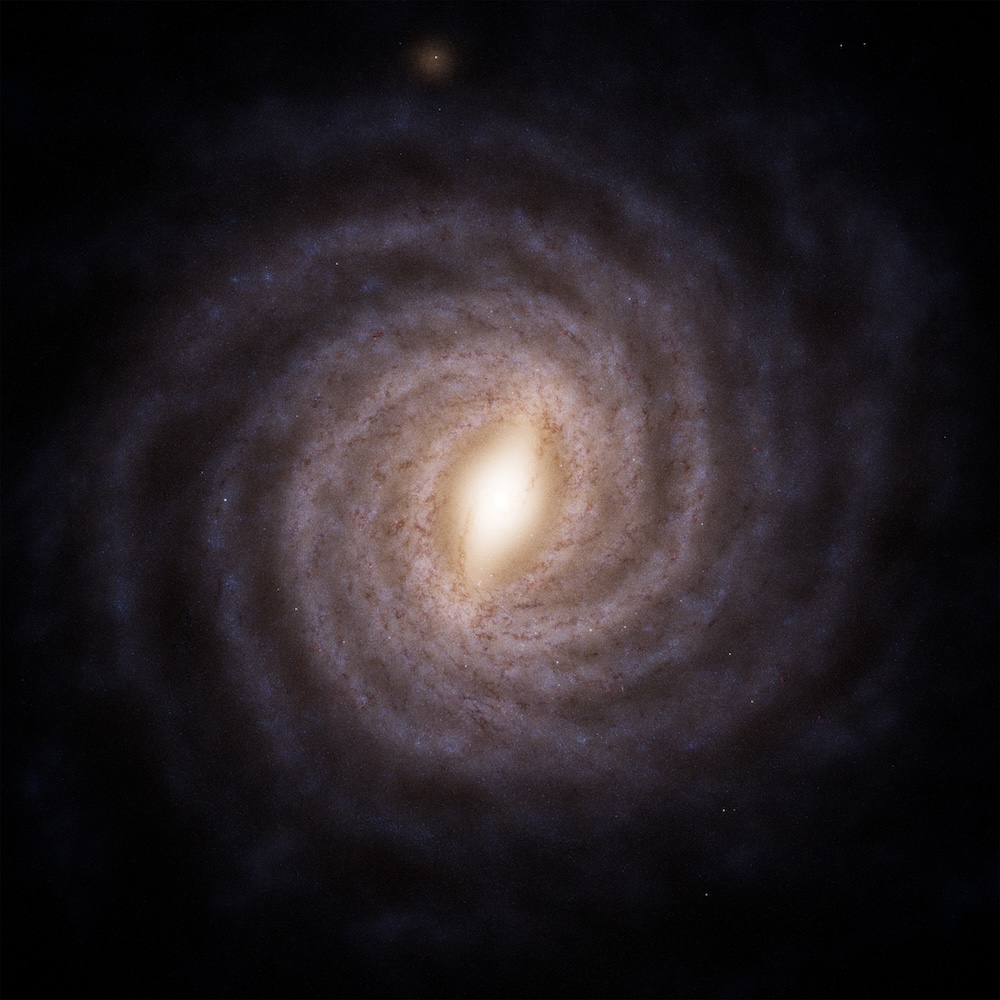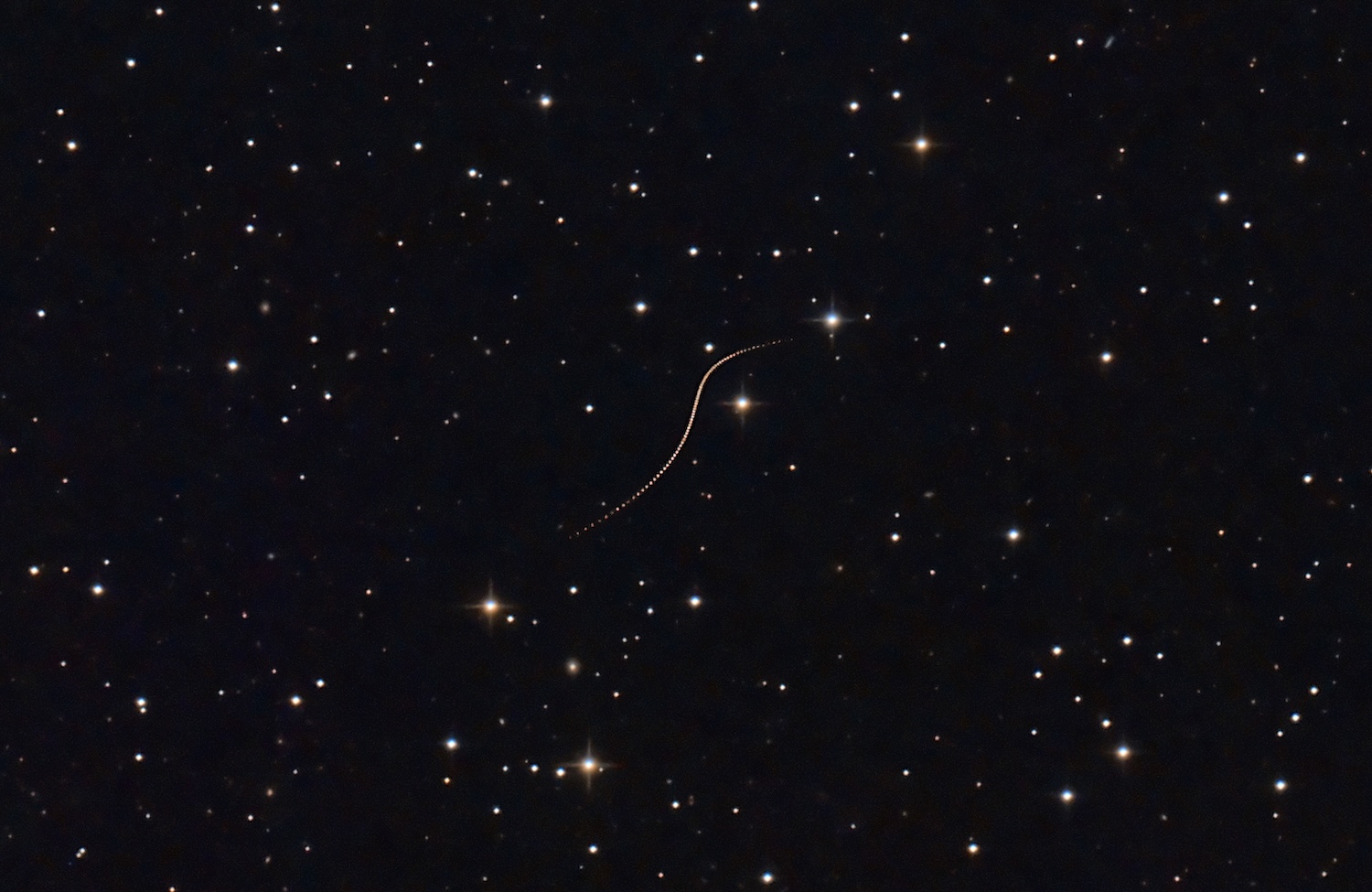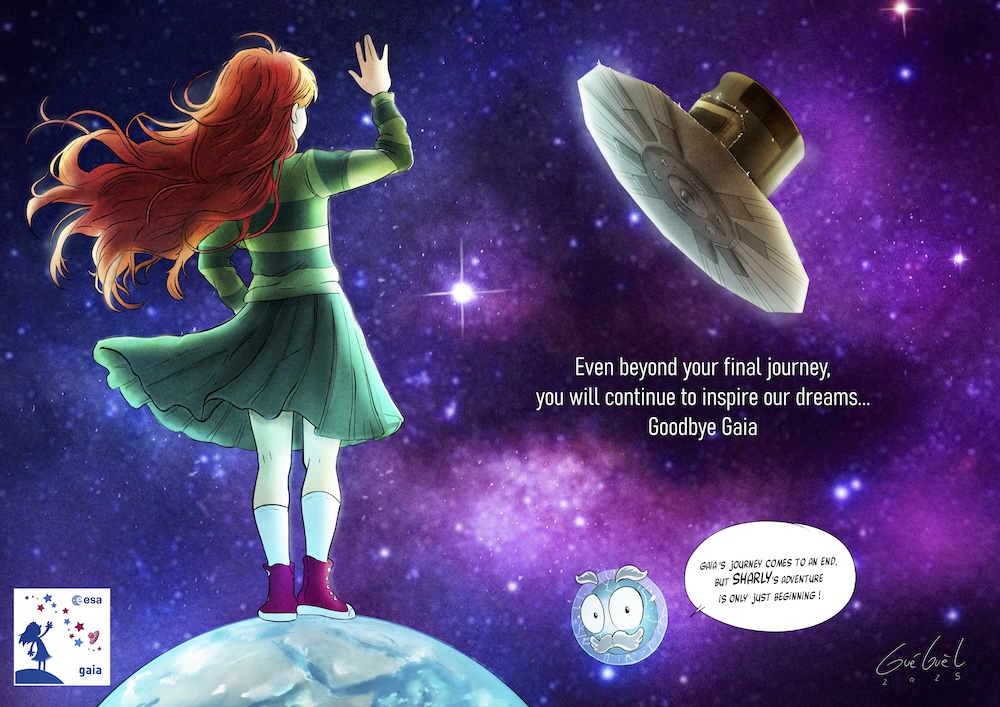IoW_20250327 - Gaia
Image of the Week
A milestone for the Gaia mission: spacecraft retirement and passivation
Figure 1. "I waved while you soared up into the sky, now I wave you a proper goodbye. " Goodbye message by Sharly, the girl on the fairing logo. Credits: ESA - CC BY-SA 3.0 IGO.
"The epitaph of Gaia:
Stop, traveler, as you pass by.
A science jewel was I.
Many minds were set on me.
Now, I drift as cold debris."
A fitting farewell message by Laurent Eyer, manager of the team responsible for the processing of variability data in the Gaia Collaboration. The Gaia spacecraft was passivated today, after more than 10 years of gathering science data. A milestone for the Gaia mission but a sad day for many of the astronomers that worked many years on this mission.
Names of the many scientists, engineers, software developers, assistants and coordinators were written to an onboard memory space of the now-retired spacecraft. Some of the people that shared small, or very large pieces of their life, working on this mission prepared a special farewell message. Messages eternalized onboard the spacecraft, like a message in a bottle, as one of the members of the Gaia Collaboration so nicely phrased it.
"Everything ends. With data left to analyse, your legacy is still being written. Just one last task, be our message in a bottle. Hope we will find you again." Farewell message by Diana Harrison, member of the Gaia Collaboration
While the Gaia spacecraft has moved into its retirement orbit, work continues for the Gaia Collaboration. Two huge data releases are in the making, Gaia Data Release 4 (expected in 2026) and the final legacy archive (expected not before the end of 2030). A first glimpse into the many different data sets to be expected with Gaia's fourth data release was published today. Not only will the release be based on 66 months of Gaia data, about twice as many observations compared to Gaia data release 3, it will also contain more complex and a larger variety of data sets, more than doubling the types of data in the catalogue. Bringing for the first time comprehensive time series data of all flavours (astrometry, photometry, spectroscopy, astrophysical parameters, ...) and for all sources, a data set eagerly anticipated by the community.
There's a star map waiting in the sky
we'd like you to come and meet it
it is stored in the Gaia Archive
there's a star map waiting in the sky
we made sure not to blow it
cuz we know it's so worthwhile
so
let the scientists search it
let the scientists use it
let the scientists boogie
Written as a farewell message from the Gaia Archive to the Gaia spacecraft.
Even though the largest releases are yet to come, this spacecraft has already written history with many scientific revelations in the past years. Close to 14,000 peer-reviewed publications using Gaia data were published since 2013, with currently over 2000 papers published per year, making Gaia one the most succesful science missions ever. But Gaia's ambitions do not stop here. There is more, we have not seen the Gaia data in its full potential yet. Gaia's next data release, being produced at this very moment by hundreds of scientists, engineers, and specialists of the Gaia Collaboration, will for the first time bring Gaia's full set of epoch data. Data that will allow to study in exquisite detail one's favourite object in the night sky.
Farewell message by Giuseppe Altavilla, member of the Gaia Collaboration.
So to any travellers here, stop as you pass by and learn about this mission. This mission not only revolutionized our view on the Milky Way (the newest update on the Milky Way by Gaia is shown in the visual below), its star data allowed to update the orbits of thousands of asteroids and study the Solar system more efficiently through stellar occultation as well. Gaia's precise motion information gave us a unique view on the Milky Way's past, present and future.
High-contrast face-on impression of the Milky Way. Credits: ESA/Gaia/DPAC, Stefan Payne-Wardenaar - CC BY-SA 3.0 IGO.
But not only the broad structures in the Milky Way can be studied with Gaia data. Also the insides of stars... by accurately measuring the distances to stars, a prediction that the interior of white dwarfs crystallizes while cooling off was finally confirmed! And what about the matter that is in between the stars. Even though Gaia does not directly observe this matter, its influence on the light reaching Gaia is carefully disentangled and after processing, a 3D map of dust and interstellar matter can be constructed. And imagine that, Gaia can even observe the surface of stars, and spot starquakes!
What wonderful things are yet to be discovered from Gaia's full data set. On 15 January this year, the Gaia spacecraft already stopped taking new science observations. The last grams of cold gas were used to perform a set of technology tests. These tests can give more insight in the workings of the spacecraft and might improve the processing of the data for future data releases. Other tests can provide valuable insights for the preparation of future missions, like LISA.
While the Gaia mission operations team was busy testing technology onboard the Gaia spacecraft, the sun shield was temporarily oriented perpendicular to the Sun, allowing Gaia to become brighter in the night sky. A perfect opportunity for citizen astronomers to follow up and perform some splendid observations. And so they did, with great enthusiasm, from across the world. One beautiful observation is shown below. Many more can be found from this webpage.
Observations of the Gaia spacecraft by Tim Ellison. Credits: Tim Ellison.
Today, Gaia is inserted into its final heliocentric orbit. It will start trailing Earth, and will return to Earth every 14 years, at a safe distance of ~10 million kilometres. A video has been published to show how Gaia's orbit changed following the final burn of its thrusters.
Gaia leaves for its retirement orbit. This video was made with Gaia Sky by Tiago Nogueira, Toni Sagristà, and Stefan Jordan. Text by Tiago Nogueira, Stefan Jordan and Tineke Roegiers. Special thanks to Alessandro Masat and Ander Martinez from ESA for providing Gaia’s orbit and attitude data. Credits: ESA/Gaia/DPAC - CC BY-SA 3.0 IGO.
“Two is better than one,” someone said,
so two telescopes you were given.
“Two is better than one,” you replied,
so two billion stars you gifted.
Ten years (and more!) you danced around the Sun
but always stayed on station.
Duty is done. It’s time to be untethered,
to wander free beneath those stars,
no further measures to be taken.
You’ll hear no more from me, nor we from you,
but you’ll not easily be forgotten.
Your missives are saved, we’ve written them down:
all (and more) of those two billion,
with more wonders in them surely hidden.
Farewell message by Ronald Drimmel, member of the Gaia Collaboration
Thank you message by Guéguél, who drew the logo that was placed on the fairing when Gaia was launched in 2013. Credits: Joel Schopfer.
Goodbye from Sharly, the girl from the fairing logo. Credits: ESA/Gaia/DPAC
Additional reading:
- A web story on this milestone was published by ESA Operations.
- The page on the passivation can be found here.
- An overview on Gaia Data Release 4 has been published now
"Everything’s got to end sometime. Otherwise, nothing would ever get started."
Gaia: rewriting the story of the Milky Way. Credits: ESA (full credit description at the end of the video).
Credits: ESA/Gaia/DPAC. Story written by Tineke Roegiers.
[Published: 27/03/2025 - Updated 28/03/2025]
- Removed a total of (6) style text-align:center;
- Removed a total of (3) style text-align:justify;
Image of the Week Archive
- Removed a total of (1) border attribute.
- Removed a total of (1) cellpadding attribute.
- Removed a total of (1) cellspacing attribute.








































 Sign in
Sign in
 Science & Technology
Science & Technology
